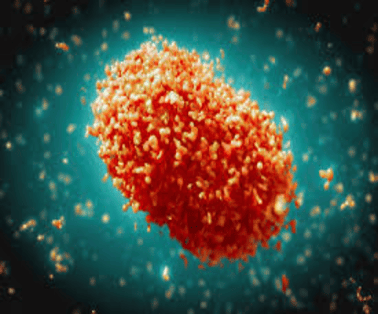Monkey pox, now officially referred to as mpox, is making headlines once again due to a recent study revealing a novel adaptation mechanism that enhances its ability to infect humans. Originally named after its discovery in monkeys in 1958, the virus has undergone a name change to reduce stigma and emphasize its human-to-human transmission capability.
What is Monkey Pox?
- Monkey pox is a viral zoonosis (a virus transmitted to humans from animals)
- The symptoms are similar to those seen in the past in smallpox patients, although it is clinicall less severe.
- With the eradication of smallpox in 1980 and subsequent cessation of smallpox vaccination, monkeypox has emerged as the most important orthopoxvirus for public health.
- Mpox primarily occurs in central and west Africa, often in proximity to tropical rainforests, and has been increasingly appearing in urban areas.
- Animal hosts include a range of rodents and non-human primates.
- The disease was called monkeypox because it was first identified in colonies of monkeys kept for research in 1958. It was only later detected in humans in 1970
The monkey pox virus
- Monkey pox virus is an enveloped double-stranded DNA virus that belongs to the Orthopoxvirus genus of the Poxviridae family.
- There are two distinct genetic clades of the mpox virus: the central African (Congo Basin) clade and the west African clade.
- The Congo Basin clade has historically caused more severe disease and was thought to be more transmissible.
- The geographical division between the two clades has so far been in Cameroon, the only country where both virus clades have been found
Recent Outbreaks and Spread
- Human Mpox was first identified in 1970 in the Democratic Republic of the Congo in a 9-month-old boy in a region where smallpox had been eliminated in 1968.
- Since then, most cases have been reported from rural, rainforest regions of the Congo Basin
- Since 1970, human cases of Mpox have been reported in 11 African countries
- In 2003, the first Monkey pox outbreak outside of Africa was in the United States of America and was liked to contact with infected pet prairie dogs.
- In May 2022, multiple cases of Mpox were identified in several non-endemic countries.
How Monkey Pox Spread
- Animal-to-human (zoonotic) transmission can occur from direct contact with the blood, bodily fluids, or cutaneous or mucosal lesions of infected animals.
- In Africa, evidence of Mpox virus infection has been found in many animals including rope squirrels, tree squirrels, Gambian pouched rats, dormice, different species of monkeys and others.
- The natural reservoir of Monkey pox has not yet been identified, though rodents are the most likely.
- Eating inadequately cooked meat and other animal products of infected animals is a possible risk factor.
- People living in or near forested areas may have indirect or low-level exposure to infected animals.
- Human-to-human transmission can result from close contact with respiratory secretions, skin lesions of an infected person or recently contaminated objects.
Symptoms of Monkey Pox
- Infected people break out in a rash that looks a lot like chicken pox. But the fever, malaise, and headache from Mpox are usually more severe than in chicken pox infection.
- In the early stage of the disease, Mpox can be distinguished from smallpox because the lymph gland gets enlarged.
Treatment And Vaccine
- There is no specific treatment or vaccine available for Mpox infection,
- But the European Union has recommended a Small Pox Vaccine, Imvanex to treat Mpox after the WHO declared Mpox a global health emergency.
Conclusion
As monkey pox continues to evolve and spread beyond its traditional regions, understanding its transmission, symptoms, and prevention becomes critical. With rising global cases and new scientific insights into the virus’s adaptability, public awareness and vaccination strategies will play a key role in controlling future outbreaks.
To Download Monthly Current Affairs PDF Click here
Click here to get a free demo
Discover all about CLAT Exam



